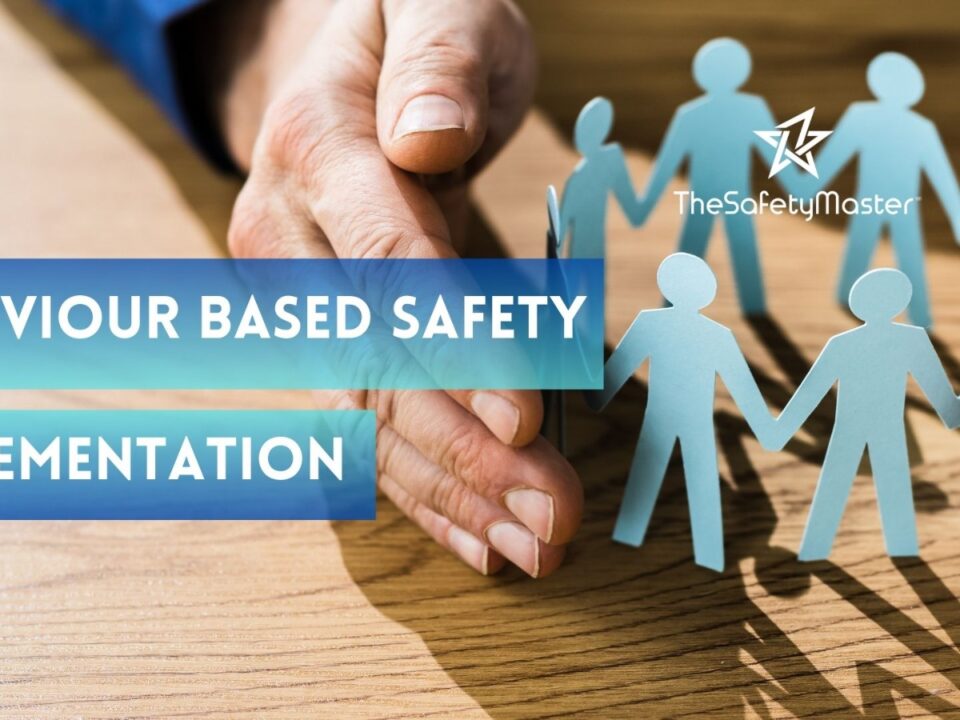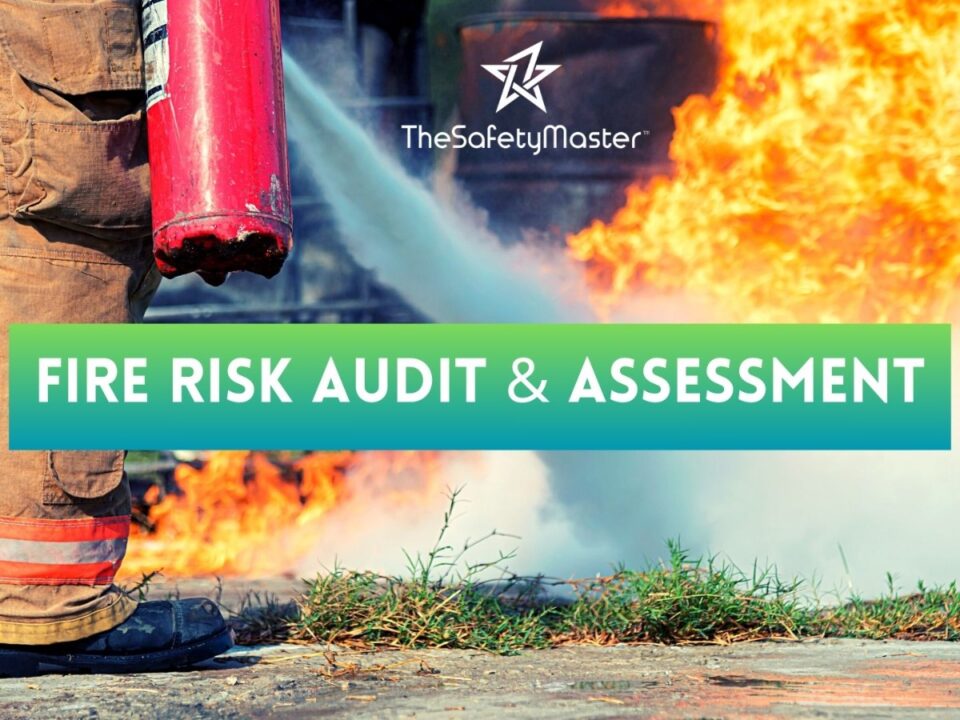The Science Behind Behaviour Based Safety: Understanding Human Behavior to Improve Workplace Safety

Understanding Hazardous Area Classification for Gas Filling Plants in India: Ensuring Safety Compliance to Protect Workers and the Environment
October 9, 2023
Strategizing for Success: Harnessing the Benefits of HAZOP Study in Process and Oil & Gas Sectors
October 10, 2023In this article, we delve into the intriguing science behind Behavior Based Safety (BBS) and unlock the mysteries of human behavior that hold the key to enhancing workplace safety. By understanding the intricate workings of the human mind and its impact on our actions, we can pave the way for a safer work environment. Join us as we explore the fascinating findings from behavioral research, uncover practical techniques to improve safety practices, and promise you valuable insights that will revolutionize your approach to workplace safety. Get ready to unlock the potential for safer workplaces and take a step towards a more secure future.
Introduction
Workplace safety is a paramount concern for organizations worldwide. The well-being of employees and the prevention of accidents and injuries are not only moral imperatives but also vital for maintaining productivity and success. However, despite the implementation of safety regulations and protocols, incidents still occur, leaving employers searching for more effective strategies to improve workplace safety. This is where behavior-based safety comes into play.
In this fascinating exploration, we will delve into the science behind behavior-based safety and how understanding human behavior can significantly enhance workplace safety measures. We will uncover the intricacies of perception, attitudes, beliefs, motivation, social influences, training techniques, incentives, and behavioral analysis methods that contribute to creating a safer work environment. By understanding these concepts and implementing them effectively, organizations can achieve tangible improvements in their safety performance
The Concept of Behavior-Based Safety
The Concept of Behavior-Based Safety: Within the realm of workplace safety, behavior-based safety (BBS) stands as a powerful approach that focuses on understanding and influencing human behavior to enhance safety outcomes. It delves beyond traditional measures, such as protective equipment or engineering controls, by recognizing the vital role individuals play in creating safe work environments. BBS examines the interconnectedness between employee actions, organizational culture, and overall safety performance.
By emphasizing the significance of behavioral factors in preventing accidents and injuries, BBS encourages proactive engagement at all levels of an organization. It acknowledges that human behavior is complex and influenced by a myriad of internal and external factors. With this understanding, BBS aims to identify specific behaviors that contribute to workplace incidents – both safe and unsafe – in order to foster a culture of continuous improvement.
Through the implementation of BBS initiatives, organizations can empower their employees to take ownership of their own safety as well as the safety of their colleagues. By fostering open communication channels and providing comprehensive training programs, BBS promotes a sense of personal responsibility among workers. This shift towards individual accountability not only enhances overall safety performance but also cultivates a positive work environment where employees feel valued and empowered. Ultimately, behavior-based safety serves as a catalyst for change – transforming workplaces into thriving ecosystems where every individual plays an active role in fostering a safer tomorrow.
The Importance of Understanding Human Behavior in Workplace Safety
The Importance of Understanding Human Behavior in Workplace Safety: In the realm of workplace safety, understanding human behavior is of paramount importance. Human beings are complex creatures, driven by a multitude of factors that influence their actions and decisions. By delving into the depths of human behavior, we can unlock the key to improving workplace safety.
One crucial aspect is recognizing that humans are not infallible; they are prone to errors and can be influenced by various cognitive biases. By comprehending these inherent vulnerabilities, employers can design systems and processes that account for human fallibility, thus creating a safer working environment.
Moreover, understanding human behavior allows us to identify patterns and trends that contribute to unsafe practices or incidents. By analyzing behavioral data, organizations can gain valuable insights into the underlying causes of accidents or near misses. This knowledge empowers them to implement targeted interventions and preventive measures that address the root causes, reducing the occurrence of incidents significantly.
By recognizing and acknowledging the intricacies of human behavior in relation to workplace safety, we embark on a journey towards fostering a culture of safety where individuals feel empowered to prioritize their well-being and that of their colleagues. Together, we can create workplaces where safety is not just an expectation but an integral part of every action taken—a harmonious blend where productivity thrives hand-in-hand with security.
The Basics of Human Behavior
The Basics of Human Behavior Human behavior is a complex interplay of various factors that contribute to how individuals think, feel, and act in different situations. To truly understand the science behind behavior-based safety, it is essential to delve into the fundamental aspects of human behavior.
At its core, human behavior is influenced by both innate biological factors and external environmental stimuli. Our brains are intricate systems that process information from our senses and interpret it in unique ways. This interpretation forms the basis for our thoughts and subsequent behaviors.
Additionally, emotions play a crucial role in shaping human behavior. The spectrum of emotions we experience – from joy to fear, anger to love – significantly impacts our decision-making processes. Understanding how these emotions influence workplace safety can help create positive environments where employees feel empowered and motivated to prioritize their own safety as well as that of their colleagues.
By grasping the nuances of human behavior, organizations can design strategies that tap into individuals’ intrinsic motivations and foster a culture of safety. With this knowledge, they can implement training programs that resonate with employees on a deeper level, ensuring improved compliance with safety protocols. Moreover, recognizing the impact of social influences within a workplace enables leaders to cultivate an environment where colleagues support one another in making safe choices.
Ultimately, comprehending the basics of human behavior allows us to recognize the incredible potential for growth and change within ourselves and others. It encourages us to believe in our ability to adapt and create safer working environments for everyone involved.
The Role of Perception in Workplace Safety
The Role of Perception in Workplace Safety: Perception, the intricate process through which we interpret and make sense of our surroundings, plays a crucial role in workplace safety. Our perception of potential hazards and risks directly influences our behaviors and decision-making processes. Furthermore, perception encompasses not only what we see but also how we interpret and assign meaning to those observations.
One aspect of perception that significantly impacts workplace safety is the tendency to overlook or underestimate risks due to familiarity. We often become complacent when working in familiar environments, assuming that potential dangers are minimal or non-existent. This misguided perception can lead to a lack of vigilance and a disregard for necessary safety protocols.
However, by raising awareness about the role perception plays in workplace safety, organizations can empower employees to develop a keen sense of observation. Training programs can be designed to enhance individuals’ ability to accurately perceive risks by highlighting the importance of attentiveness and mindfulness. By doing so, organizations create an optimistic environment where individuals feel empowered to actively contribute towards maintaining a safe work environment.
Overall, understanding the intricacies of perception is vital for creating effective behavior-based safety programs. By acknowledging the impact perception has on workplace safety decisions, organizations can foster a culture where employees feel motivated and confident in their ability to identify hazards accurately. Ultimately, this leads to reduced accidents and injuries while promoting positivity among workers as they actively contribute towards maintaining a safe working environment for themselves and their colleagues.
The Influence of Attitudes and Beliefs on Safety Performance
The Influence of Attitudes and Beliefs on Safety Performance: Attitudes and beliefs play a crucial role in shaping safety performance within the workplace. Our perceptions and beliefs about safety risks, norms, and our own abilities impact the decisions we make regarding safety practices. Positive attitudes towards safety can create a culture where employees are more mindful of potential hazards, leading to improved safety performance overall.
When individuals hold strong beliefs in the importance of safety, they are more likely to adhere to safety protocols and actively engage in risk mitigation efforts. Such beliefs can be fostered through effective communication, training programs, and leadership that emphasizes the value of workplace safety. By instilling positive attitudes towards safety within employees, organizations can create a virtuous cycle where individuals feel empowered to take ownership of their own well-being as well as that of their colleagues.
Moreover, when employees truly believe that their actions can make a difference in preventing accidents or injuries, they become motivated to prioritize safe practices. Cultivating a sense of collective responsibility for workplace safety encourages individuals to not only focus on their personal behavior but also look out for others’ well-being. This shift in mindset creates an environment where everyone feels supported and valued, fostering collaboration towards a shared goal of maintaining a safe workplace.
Ultimately, by recognizing the profound influence that attitudes and beliefs have on safety performance, organizations can design strategies that inspire positive mindsets among employees. When individuals genuinely believe in the importance of prioritizing safety at work, they contribute to the creation of an optimistic work environment characterized by enhanced vigilance and proactive risk management – leading to improved overall workplace safety outcomes.
Understanding Motivation and its Impact on Workplace Safety
Understanding Motivation and its Impact on Workplace Safety Motivation plays a crucial role in determining the success of any workplace safety program. In the realm of behavior-based safety, understanding what drives individuals to act safely is key to fostering a positive and proactive safety culture. Motivation can be intrinsic or extrinsic, with both types influencing an individual’s behavior in unique ways.
Intrinsic motivation stems from an individual’s internal desires and values. When employees are intrinsically motivated to prioritize safety, they exhibit a genuine concern for their own well-being and that of their colleagues. This self-driven motivation creates a ripple effect throughout the organization, fostering a sense of collective responsibility for maintaining a safe working environment.
Extrinsic motivation, on the other hand, involves external incentives such as rewards or recognition for safe behaviors. While these incentives can be effective in promoting short-term compliance with safety protocols, their long-term impact may vary. To create sustained motivation, it is essential to align extrinsic rewards with intrinsic motivators. By emphasizing the importance of personal growth, career progression, and fostering a supportive work environment, organizations can tap into employees’ deeper motivations and encourage them to actively engage in safe practices.
Ultimately, by recognizing the diverse motivational factors that influence workplace safety behavior and leveraging them effectively, organizations can foster a culture where individuals feel empowered to prioritize their own safety and that of others. This not only leads to reduced accidents but also cultivates an atmosphere of trust and accountability where employees thrive both personally and professionally
The Power of Social Influences in Shaping Safety Behavior
The Power of Social Influences in Shaping Safety Behavior: In the intricate tapestry of workplace safety, one thread that cannot be overlooked is the power of social influences. Human beings are inherently social creatures, and our behaviors are greatly influenced by those around us. When it comes to safety in the workplace, this influence can be harnessed to create a positive and proactive culture of safety.
Social norms play a significant role in shaping safety behavior. When individuals observe their colleagues adhering to safety protocols and taking precautions, they are more likely to follow suit. By cultivating a climate where safe practices are not only expected but celebrated, organizations can create a ripple effect that motivates employees to actively contribute to a safer working environment.
Furthermore, the power of social networks should not be underestimated. Positive peer pressure and support systems can work wonders in improving workplace safety outcomes. Encouraging teamwork and collaboration allows for open communication about potential hazards and fosters an environment where individuals feel comfortable voicing their concerns or seeking guidance from their peers.
By tapping into the power of social influences, organizations can create a collective commitment towards workplace safety. This not only enhances individual responsibility but also strengthens the overall safety culture within an organization. Together, we can weave a fabric of safety that protects and empowers every individual within the workplace community.
The Role of Training and Education in Behavior Based Safety
The Role of Training and Education in Behavior Based Safety: Effective training and education play a crucial role in the implementation of behavior-based safety strategies. It is through structured learning programs that employees gain the knowledge and skills needed to identify potential hazards, make informed decisions, and actively engage in safe behaviors. Training programs should cover various aspects such as risk assessment techniques, safety procedures, emergency protocols, and the proper use of personal protective equipment.
By investing in comprehensive training initiatives, organizations cultivate a safety-conscious culture where individuals are equipped with the tools to recognize risks proactively. Providing interactive workshops and simulations not only enhances employees’ understanding but also fosters a sense of ownership towards safety. Moreover, ongoing educational opportunities ensure that workers stay abreast of emerging trends and best practices within their industries – promoting continuous improvement in workplace safety standards.
By prioritizing training and education as cornerstones of behavior-based safety initiatives, companies empower their workforce with the knowledge needed to mitigate risks effectively. This leads to an environment where employees take responsibility for their own safety as well as that of their colleagues. Ultimately, when everyone is well-informed and invested in creating a safe workplace, accidents are reduced, productivity flourishes, and individuals can thrive both personally and professionally.
Utilizing Incentives and Rewards for Improved Safety Performance
Utilizing Incentives and Rewards for Improved Safety Performance: Incentives and rewards can serve as powerful motivators for employee engagement in workplace safety. By offering tangible benefits or recognition, organizations can encourage employees to actively participate in safety initiatives. Studies have shown that when individuals are rewarded for their safe behaviors, they are more likely to repeat those actions, leading to a positive safety culture.
Incorporating a variety of incentives can enhance the effectiveness of this approach. From financial bonuses and gift cards to extra time off or public recognition, organizations have the opportunity to tailor rewards based on individual preferences. By aligning incentives with desired safety outcomes, employees are encouraged to consistently prioritize safe practices.
However, it is important to ensure that the incentive programs are designed thoughtfully and aligned with organizational values. The rewards should not only recognize individual achievements but also foster teamwork and collaboration among employees. By creating a supportive environment where everyone feels invested in safety performance, organizations can propel a collective sense of responsibility towards achieving optimal workplace safety standards.
Emphasizing the positive impact of incentives and rewards on both individual employees and the overall organization cultivates an optimistic outlook on workplace safety. Employees become more motivated and enthusiastic about contributing towards a safer work environment, ultimately leading to lower accident rates and improved productivity levels.
The Application of Behavioral Analysis Techniques in Workplace Safety
The Application of Behavioral Analysis Techniques in Workplace Safety: In the pursuit of fostering a safer work environment, embracing behavioral analysis techniques proves to be an invaluable strategy. By employing this method, organizations can gain insights into the underlying causes of unsafe behaviors and devise targeted interventions. One such technique is the ABC analysis, which involves systematically studying Antecedents (triggers), Behaviors (actions), and Consequences (outcomes) to identify patterns and implement effective preventive measures.
Through careful observation and data collection, organizations can pinpoint specific antecedents that contribute to hazardous behaviors. This may include factors such as inadequate training, poor communication channels, or even workplace stressors. By addressing these triggers head-on, companies can effectively minimize their negative impact on employee safety.
Furthermore, analyzing behaviors in relation to their consequences allows for the development of proactive safety measures. Positive reinforcement plays a crucial role in this process; rewarding safe practices encourages employees to repeat those behaviors and creates a culture of safety. In contrast, negative consequences should focus on corrective actions rather than punishment alone. By using behavioral analysis techniques in workplace safety initiatives, organizations empower their employees with knowledge while fostering an environment that promotes continuous improvement and risk reduction.
Addressing Barriers to Behavior Change in Workplace Safety
As we embark on the journey of enhancing workplace safety through behavior change, it is crucial to acknowledge and address the barriers that may impede progress. One significant barrier is the lack of awareness and understanding among employees regarding the importance of safety measures. By fostering a culture of open communication and providing comprehensive training programs, organizations can effectively educate their workforce about the risks associated with unsafe behavior. Another common obstacle is resistance to change. Humans are creatures of habit, often reluctant to abandon familiar routines. To overcome this, organizations can implement gradual changes, offering support and encouragement along the way. By emphasizing the potential benefits of adopting safe behaviors and highlighting success stories within the company, individuals can be inspired to embrace new practices willingly.
Moreover, organizational factors such as inadequate resources or unclear safety protocols can hinder behavior change initiatives. Addressing these barriers requires a proactive approach from management, ensuring that employees have access to necessary tools and guidelines for safe practices. Additionally, fostering a positive work environment where individuals feel comfortable reporting safety concerns without fear of repercussions is vital for overcoming these obstacles.
By recognizing and proactively addressing barriers to behavior change in workplace safety, organizations can create an environment where individuals feel empowered and motivated to prioritize their own well-being as well as that of their colleagues. Through a collective effort towards safer practices, businesses can not only reduce accidents but also foster a sense of unity and pride in maintaining a secure work environment for all.
Conclusion
In conclusion, the science behind behavior-based safety offers a profound understanding of human behavior and its pivotal role in improving workplace safety. By comprehending the intricacies of perception, attitudes, motivation, and social influences, and applying behavioral analysis techniques, organizations can create environments that foster a safety-conscious culture. As we delve deeper into this realm of knowledge, we unlock the potential to transform workplaces into havens of security and well-being. Imagine a future where every individual feels empowered to actively contribute to maintaining a safe working environment—such a vision is within our reach through the application of behavior-based safety principles. Let us embrace this journey with optimism and dedication, knowing that by understanding human behavior, we can truly make a difference in safeguarding lives and nurturing thriving workplaces for generations to come.




